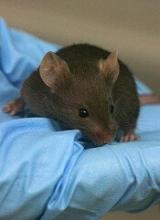Laboratory mice may not be effective models for studying immune responses to disease, according to research published in Nature Communications.
Investigators found substantial differences between the immune systems of lab mice and mice taken from the wild.
In fact, the team identified a population of “highly activated” myeloid cells in wild mice that was not present in lab mice.
The results suggest the immune responses observed in lab mice are not necessarily the same as the responses that will occur in the real world, the investigators said.
They therefore advised exercising “considerable caution” in extrapolating results from lab mice to “free-living” animals and human populations.
Mark Viney, PhD, of the University of Bristol in the UK, and his colleagues conducted this research. They studied the immune systems of 460 wild mice taken from 12 sites in the UK and compared them with mice bred in captivity.
The team assessed 62 immunological measures in the mice and found significant differences between the lab mice and the wild mice for 57 of these measures.
The investigators also found that wild mice had “a substantial burden of infection.” They had all been infected with at least 1 pathogen (whereas all lab mice were infection-free).
The wild mice had high concentrations of serum proteins as well. For example, serum concentrations of IgG were 20-fold higher in the wild mice than in lab mice, and serum concentrations of IgE were 200-fold higher in wild mice.
The investigators also found differences in splenocytes between lab mice and wild mice. For instance, wild mice had fewer natural killer (NK) cells and dendritic cells, both in absolute numbers and in proportion to spleen size. (The wild mice had smaller spleens than lab mice, both in direct comparisons and in comparisons with body mass.)
In addition, the wild mice had “highly activated” NK cells. The investigators said this may be a necessary response to the high pathogen load of the wild environment.
The team also identified a novel cell population in the wild mice that was not present in the lab mice. The investigators dubbed the population “hypergranulocytic myeloid cells.” They said more research is needed to understand the role these cells play in immune defense and regulation.
Finally, the investigators found that, compared to lab mice, wild mice had reduced cytokine responses to pathogen-associated molecular patterns, including CpG, peptidoglycan, lipopolysaccharide, and mitogenic stimulation with anti-CD3 and anti-CD28 antibodies.
“It’s remarkable that, despite the enormous number of studies of laboratory mice, ours is the first in-depth study of wild mice immune systems*,” Dr Viney said. “What this shows is that wild mouse immune systems are working at ‘warp-speed’ compared with their lab cousins.”
“These results point to us having to be much more cautious in extrapolating from the lab to the wild, but laboratory mouse models will continue to be hugely important in biological and biomedical research.”
*In a study published in Nature in 2016, researchers compared the immune systems of lab mice and mice from pet stores.


